Framing German Wartime Suffering
posted November 21, 2010 3 Comments
![]()
By Peter Monaghan
The more comfortable you are with the notion of retributive justice – and with its gory manifestations – the less bothered are you likely to be with what happened to German citizens in the closing phases of the Second World War.
You wouldn’t be alone in thinking little about the events that so devastated the defeated nation and put paid to the genocidal intentions and actions of so many leaders and citizens. The last phase of the war was so bloodcurdling that for most of the years from 1939 until the beginning of this millennium, Germans themselves said little about the Allied bombing campaigns that razed German cities and incinerated populations; about the mass rapes of German women by soldiers of an invading Red Army bent on avenging Russian deaths from German actions that exceeded 20 million; about the expulsion of 12 million people from previously German regions east of the “Oder-Neisse Line”–within redrawn Polish borders–in a brutal ethnic cleansing that resulted in some 2 million deaths.
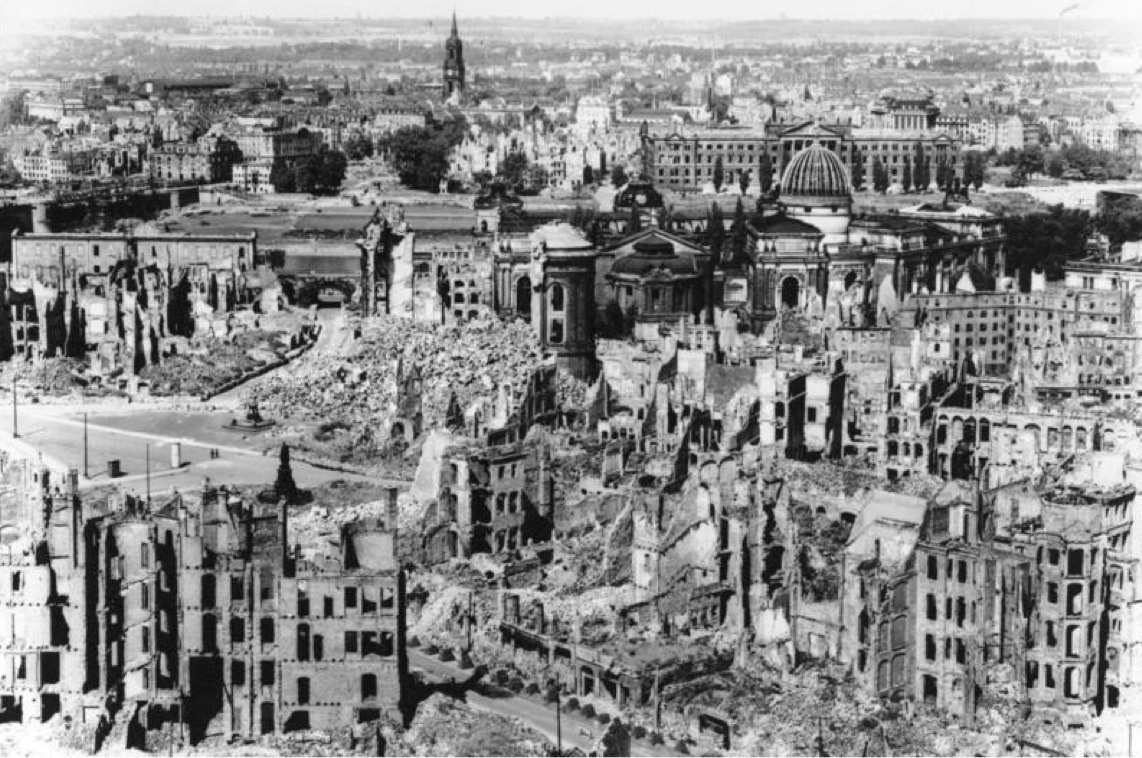
As the extent of Nazi criminality emerged and became widely known, even raising the concept of German citizens suffering came to seem an obscene intervention.
And yet, as a few considered books are now making clear, those events continued to haunt individual and collective Germans memories, and to find expression in fiction and non-fiction books and in feature films.
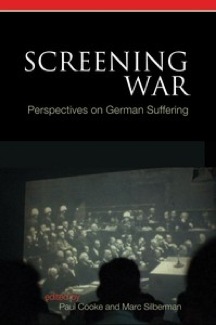 In one new publication, Screening War: Perspectives on German Suffering (Camden House), Paul Cooke, a professor of German cultural studies at the University of Leeds, and Marc Silberman, a professor of German at the University of Wisconsin, collect essays about the impact on German visual culture of German wartime suffering. That includes a spate of films dealing with German trauma and memory, they and their fellow authors note. But Cooke and Silberman also note that films addressing the sensitive issue have a long tradition in German cinema. They suggest that earlier films, and the way they compare with films of the last decade, illustrate evolving German attitudes towards Germany’s and Germans’ wartime trauma. [Read an interview with Marc Silberman]
In one new publication, Screening War: Perspectives on German Suffering (Camden House), Paul Cooke, a professor of German cultural studies at the University of Leeds, and Marc Silberman, a professor of German at the University of Wisconsin, collect essays about the impact on German visual culture of German wartime suffering. That includes a spate of films dealing with German trauma and memory, they and their fellow authors note. But Cooke and Silberman also note that films addressing the sensitive issue have a long tradition in German cinema. They suggest that earlier films, and the way they compare with films of the last decade, illustrate evolving German attitudes towards Germany’s and Germans’ wartime trauma. [Read an interview with Marc Silberman]
The book comes soon after a similar volume from Camden House, issued in 2009: Germans as Victims in the Literary Tradition of the Berlin Republic, edited by Stuart Taberner and Karina Berger. Essays in that collection addressed the increasing willingness of Germans to discuss events at the war’s end, and the persistent traumatization of Germans who were alive at that time.
The volume’s contributors noted a small boom in writing relating to such experiences, including W.G. Sebald’s On the Natural History of Destruction (Random House, 2003), which asked why so little German literature had considered such events as the Allied air attacks that had taken 600,000 German lives and left more than seven million Germans homeless.
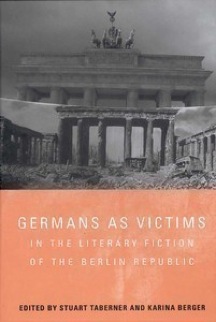 The expulsion of ethnic Germans from Eastern Europe was prominently considered in the volume – much-discussed, for example, was the Nobel laureate Günter Grass’s Crabwalk (Harcourt, 2003), a historical novel that explored, as a sort of emblem of retribution against Germans, the sinking by a Soviet submarine of a German refugee ship in January 1945.
The expulsion of ethnic Germans from Eastern Europe was prominently considered in the volume – much-discussed, for example, was the Nobel laureate Günter Grass’s Crabwalk (Harcourt, 2003), a historical novel that explored, as a sort of emblem of retribution against Germans, the sinking by a Soviet submarine of a German refugee ship in January 1945.
Contributors to both Camden House publications relate that the late 1940s and early 1950s saw an intense focus on the issue of German victimhood, but then guilt, shame, and blame took over, ushering in a long period when Germans were excoriated as perpetrators and maintained a silence that signaled that the anger was reaching its mark. Only from the mid-1990s did that focus shift again to allow that while millions of Germans certainly were Nazis or abetted the mass murderers – were indulgers in “everyday evil”– millions of Germans also were victims of both their wartime rulers’ savagery and the cold calculus of Allied retribution.
Filming in the Rubble of War
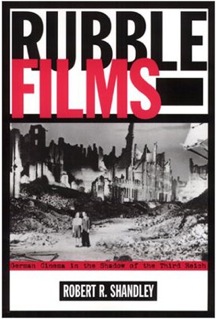 Among other publications on the subject has been Temple University Press’s 2001 release, Rubble Films: German Cinema in the Shadow of the Third Reich, by Robert R. Shandley. The book’s title referred to the Trümmerfilme – “rubble films” – made under Allied supervision after World War II among the rubble of bombed-out German cities, even as German women, the trümmerfrau, picked their way through the ruins to salvage whatever could serve in any way to shore up postwar life.
Among other publications on the subject has been Temple University Press’s 2001 release, Rubble Films: German Cinema in the Shadow of the Third Reich, by Robert R. Shandley. The book’s title referred to the Trümmerfilme – “rubble films” – made under Allied supervision after World War II among the rubble of bombed-out German cities, even as German women, the trümmerfrau, picked their way through the ruins to salvage whatever could serve in any way to shore up postwar life.
Shandley analyzed 17 films made between 1946 and 1949, some well known, some deservedly obscure but still useful indices of cultural conditions of the day. Among the detective tales, satires, and melodramas were popular features such as The Murderers Are Among Us (1946) and In Those Days (1947).
Shandley unearthed some strange titles, too, none more so than Long is the Road, a 1948 Yiddish/German production touting the benefits of migrating to Palestine and a satire of postwar life rendered as biblical allegory, The Apple is Off! (1948).
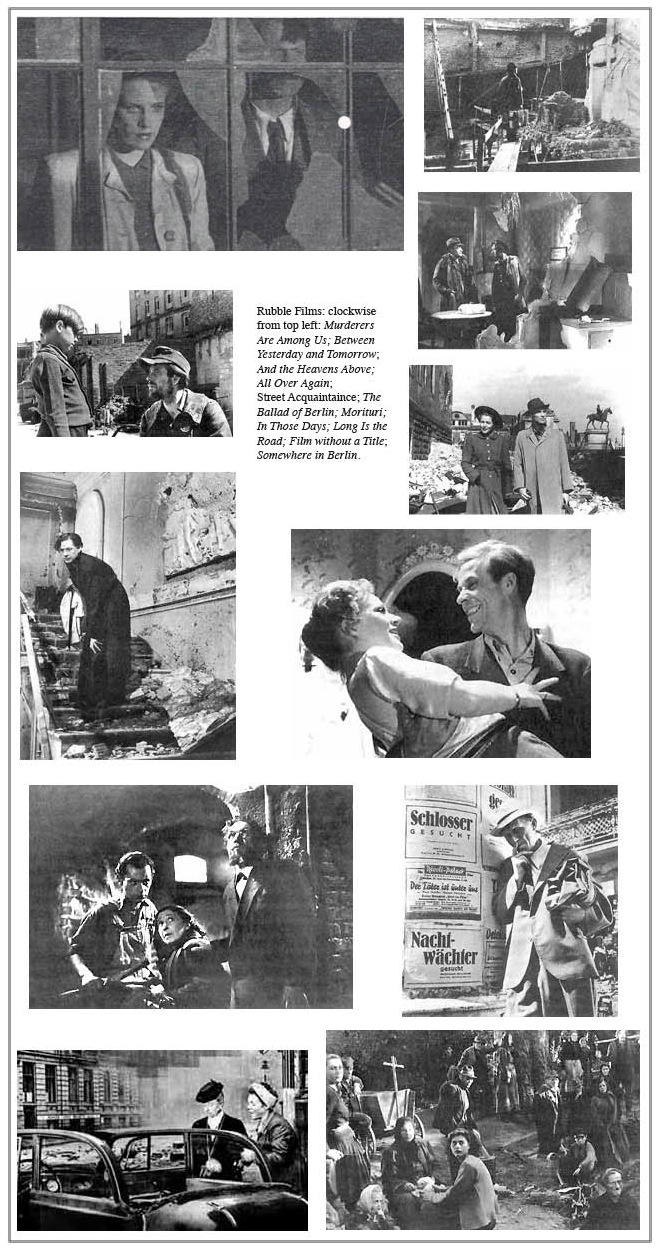
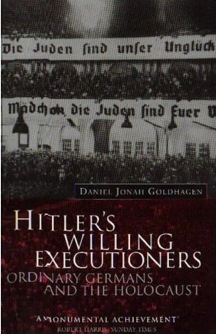 Shandley had earlier edited a volume of essays Unwilling Germans: The Goldhagen Debate (1998) that traced German resistance to Harvard historian Daniel Goldhagen’s 1996 indictment of German citizens in wartime, Hitler’s Willing Executioners: Ordinary Germans and the Holocaust. So he could not have been surprised to find that German filmmakers’ strong tendency after the war was to avoid Nazis war atrocities, and certainly to steer away from the kinds of films the Nazi war machine had earlier made in large numbers – many of those were light fare: musicals, comedies, and the like.
Shandley had earlier edited a volume of essays Unwilling Germans: The Goldhagen Debate (1998) that traced German resistance to Harvard historian Daniel Goldhagen’s 1996 indictment of German citizens in wartime, Hitler’s Willing Executioners: Ordinary Germans and the Holocaust. So he could not have been surprised to find that German filmmakers’ strong tendency after the war was to avoid Nazis war atrocities, and certainly to steer away from the kinds of films the Nazi war machine had earlier made in large numbers – many of those were light fare: musicals, comedies, and the like.
He also found that the rubble films tended to seek to assuage German guilt by conflating Third Reich crimes and German postwar suffering, as if the latter might excuse the former. The feint, he observed, seemed designed to help blameworthy Germans to persuade themselves that they had not been Hitler’s willing executioners, after all, but had instead undertaken an “inner emigration” – they had remained in Germany not as Nazis but as critical or hobbled observers of Nazi leaders.
Even more bracing, wrote Shandley, was the way many films portrayed Germans as needing to win back the trust of fellow Germans who shared their guilt, but never the trust of the victims of the Nazi regime. Shandley carefully observed not only what films of the period included, but what they did not.
Take the case Helmut Käutner’s first postwar film, In jenen Tagen (In Those Days, aka Seven Journeys) of 1947. Käutner was no hack – in fact, he was sufficiently admired in Germany for his long career that in 1980 he was honored with a postage stamp. In jenen Tagen purported to show a cross-section of German society, including a Jewish couple and a composer who had been labeled as subversive.
That has long brought the film positive notices. For example, earlier this year, 2010, when it was shown in a Käutner retrospective by the Harvard Film Archive and the Goethe Institut Boston, program notes praised Käutner: “During a time when most Germans wanted to forget the past, Käutner eschewed the controlled setting of the UFA [key German] studios and chose to film in the bombed out streets of Berlin, crafting a humanistic rendering of recent history.”
The notes also observed that Käutner had himself been a target of Nazi censors – they banned his directorial debut Kitty and the World Conference (1939) due to its “pro-English tendencies.” The notes continued: “Although active in the German film industry during the Third Reich, Käutner’s work was noted for its more humanistic depiction of daily life than his contemporaries. He rejected the UFA filmmaking establishment and produced thoughtful works which considered the struggles of the German people during a period of great turmoil.”
But Shandley is less sanguine. Käutner’s film, he observes, “tells seven stories of innocent Germans, while neglecting to portray the culpability of others.” In that respect, it had many kin, during the postwar years, Shandley says: “Most of the films treat the question of guilt as just one problem among many in the postwar period.” Self-absolution could be cinematically persuasive even if historically suspect: “The black market is represented as being as distressing as, or even worse than, the presence of war criminals. The German refugees from Silesia and the former German soldiers returning from war often occupy the same symbolic position as the survivors of the death camps.”
“The rubble films’ treatment of the past is far from morally satisfying to today’s viewers,” he concluded with considerable understatement. Films like Harald Braun’s 1947 Zwischen Geseern und Morgen (Between Yesterday and Tomorrow), Peter Pewas’s 1948 Straßenbekanntschaft (Street Acquaintance), and R.A. Stemmle’s 1948 Berliner Ballade (The Ballad of Berlin), he wrote, “only rarely confront the institutions, traditions, and assumptions that led to the catastrophe that was postwar Europe. At best, they mention them; at worst, they lie about them.”
Thus, he wrote, “these films can be seen as training films for the attitude of dismissal regarding the Holocaust that has often prevailed in public discourse in Germany in the ensuing fifty years.”
Framing Suffering
Shandley identifies one telling factor in the slant of films of the period: that they were generally made by directors who had been favored by, and often employed by, the Nazi regime of the years only just past. He writes: “Just as the agitators who founded the ‘New German Cinema’ in the 1960s charged, there was no discernable difference between the personnel of the [film] industry during and after the war.” For example, Wolfgang Liebeneiner, artistic director of the leading film company of the Nazi era, after the war continued on as a film director.
 Just out (November 2010) is another new book, Berlin at War, by Roger Moorhouse (Basic Books); the subtitle of the British edition is Life and Death in Hitler’s Capital, 1939-45. It marshals an array of primary sources to detail many aspects of life in the German capital – rationing, air-raid defenses, propaganda, surveillance, the presence of many slave laborers –Czech, Dutch, French, Polish, Ukrainian… – which must surely have alerted even the most self-absolving Nazi sympathizers that something terrible was afoot.
Just out (November 2010) is another new book, Berlin at War, by Roger Moorhouse (Basic Books); the subtitle of the British edition is Life and Death in Hitler’s Capital, 1939-45. It marshals an array of primary sources to detail many aspects of life in the German capital – rationing, air-raid defenses, propaganda, surveillance, the presence of many slave laborers –Czech, Dutch, French, Polish, Ukrainian… – which must surely have alerted even the most self-absolving Nazi sympathizers that something terrible was afoot.
Reconsideration of German suffering has been growing during the last decade. Julia M. Klein, an American literary critic, wrote in a 2003 essay, “Germans as Victims of World War II,” that “even as Berlin remakes itself into a 21st-century showplace of skyscrapers and museums, and Dresden painstakingly recreates its Baroque heart brick by brick, the issue of German victimization has exploded more forcefully into popular consciousness.”
 She cites a number of books that demonstrate renewed willingness to consider how much the war and its aftermath cost Germans. Anthony Beevor’s The Fall of Berlin 1945 (Viking Press, 2002, later translated into German), described the Red Army’s vengeful brutality as it invaded Germany. In Der Brand: Deutschland im Bombenkrieg 1940-45 (Propyläen Verlag, 2002; published in English translation by Columbia University Press in 2006 as The Fire), the Holocaust scholar Jörg Friedrich described painstakingly the Allies’ destruction of city after city in Germany with 80 million incendiary bombs. (Controversially, he distorted some details of German and Allied wartime bombings, and used Holocaust terminology to describe Allied actions – for example, he appropriated the word “crematoria,” that had been used to refer to the ovens of Auschwitz, to describe incinerated Dresden air-raid shelters.)
She cites a number of books that demonstrate renewed willingness to consider how much the war and its aftermath cost Germans. Anthony Beevor’s The Fall of Berlin 1945 (Viking Press, 2002, later translated into German), described the Red Army’s vengeful brutality as it invaded Germany. In Der Brand: Deutschland im Bombenkrieg 1940-45 (Propyläen Verlag, 2002; published in English translation by Columbia University Press in 2006 as The Fire), the Holocaust scholar Jörg Friedrich described painstakingly the Allies’ destruction of city after city in Germany with 80 million incendiary bombs. (Controversially, he distorted some details of German and Allied wartime bombings, and used Holocaust terminology to describe Allied actions – for example, he appropriated the word “crematoria,” that had been used to refer to the ovens of Auschwitz, to describe incinerated Dresden air-raid shelters.)
 Klein also discussed a “long tradition” of Germans “seeing themselves, both with justification and without, as victims of the Versailles Treaty, hyperinflation and unemployment, the Nazis, Allied air attacks, the brutal Russian advance, and even de-Nazification efforts.” In that connection, she cited Shattered Past: Reconstructing German Histories (Princeton University Press, 2003), in which historians Konrad H. Jarausch, of the University of North Carolina at Chapel Hill, and Michael Geyer, of the University of Chicago, considered the “selective perception” that allowed older Germans, in particular, to overlook their own participation in World War II’s mass killing, genocide, and slave labor but to indulge instead a ” victimization perspective” in their recollections of the war and the chaos at its conclusion.
Klein also discussed a “long tradition” of Germans “seeing themselves, both with justification and without, as victims of the Versailles Treaty, hyperinflation and unemployment, the Nazis, Allied air attacks, the brutal Russian advance, and even de-Nazification efforts.” In that connection, she cited Shattered Past: Reconstructing German Histories (Princeton University Press, 2003), in which historians Konrad H. Jarausch, of the University of North Carolina at Chapel Hill, and Michael Geyer, of the University of Chicago, considered the “selective perception” that allowed older Germans, in particular, to overlook their own participation in World War II’s mass killing, genocide, and slave labor but to indulge instead a ” victimization perspective” in their recollections of the war and the chaos at its conclusion.
Suffering on Film
How does all this look, then, from the perspective of film? In Screening War, Cooke, Silberman, and their fellow essayists trace the ways German film depictions of German wartime and postwar suffering have evolved. The writers consider many films of the 1950s, most of which would be forgettable if not for the light they throw on subjects such as Cooke and Silberman’s. The two editors also consider more recent works, such as Margarethe von Trotta’s Rosenstrasse (2003), Oliver Hirschbiegel’s Oscar-nominated Downfall (2004), and the two-part television mini-series Dresden (2006).
The essays address frankly a topic that had been taboo for German filmmakers once the handwringing of the 1950s was discredited. The book results from a three-year collaboration funded by the British Arts and Humanities Research Council, “From Perpetrators to Victims? Discourses of German Wartime Suffering from 1945 to the Present.” Cooke and Silberman invited scholars from both sides of the Atlantic to a June 2007 meeting at the University of Leeds to shape the project. Then, in November 2008, the collaborators presented papers at the 41st Wisconsin Workshop in Madison. Finally, the papers were improved for inclusion in the volume of essays, which Cooke and Silberman characterize as a contribution to postwar “memory work” in Germany.
They say in their introduction that their and their fellow essayists’ interest was to take another look at thematic choices and aesthetic strategies of German filmmakers’ from the 1950s to the present, to see what they revealed about claims about, and attitudes towards, German suffering.
They wished to reconsider, then, familiar features and genres, and to draw attention to new or overlooked material: How were films framed? What did films’ structures hide? To what extent did the films present or perhaps subtly reflect social trauma? What could all that reveal about the changing status of German victimhood in cultural and political discourse?
In one of their findings, they echo Shandley’s understanding of the “rubble films,” a rather appalling one: In the years immediately after the war, a discourse of German suffering – even of a sort of historic German victimhood – took hold and became a commonplace of German cultural expression. In West Germany, the authors found, official gestures of Vergangenheitshewältigung (coming to terms with the past) emphasized atonement and reconciliation, but popular sentiment more often indulged notions of German victimization, first by Nazis, then by Communists after the war.
Thus it was after the first Nuremberg trials of November 1945 to October 1946. A sort of “triage of perpetrators and victims” arose, note Cooke and Silberman. In his 1945-46 lectures, The Question of Guilt, the philosopher Karl Jaspers responded to Germans’ desperation to repulse accusations of collective guilt for Nazi crimes by differentiating between individual guilt and collective political responsibility. His, say Cooke and Silberman, was an “early and remarkable attempt to navigate the shame and disorientation that came to mark the postwar years.”
Silence was the dominant stance towards guilt, even though various events cause guilt, itself, to flare. One was the 1961 trill of SS officer Adolf Eichmann in Jerusalem. At the time, Hannah Arendt’s commentaries on the “banality of evil” detailed Nazi machinery and “revealed the empty excuses of the Schreibtischtäter,” the “desktop perpetrators” with spurious excuses for themselves, write Cooke and Silberman.
They note that 1963-65 Auschwitz trials rekindled such questions of guilt because they “brought the victims of the ‘banality of evil’ right into Germany’s evening news and living rooms.”
The nadir for German denial came in the 1960s when children born during or after the war demanded explanations from people of their parents’ generation. And yet, write Cooke and Silberman, “for all their media treatments of the war and its consequences, the postwar generation failed to bring about in the general population the desired mindset,”
That is no surprise, given the kinds of cinema and television films that emerged from that period of questioning. Many valorized the concept of the family with “melancholic tales of orphans, broken families, and neglected children seeking escape or revenge,” they write.
Just as telling was German reception of films and television programming that might have produced a new awareness, but instead seemed to encourage further entrenchment, they add. For example, in 1979, West German television broadcast the American TV series Holocaust (1978), by Marvin J. Chomsky and Gerald Green. It portrayed the opposing fates of two families in Berlin, one Nazi and one Jewish, but the response, they write, “confirmed on the one hand the continuing widespread amnesia about the Nazi past and on the other the willingness on the part of the popular audience to acknowledge at last a measure of complicity for past crimes.”
Citing the books by Sebald, Grass, Friedrich, and others that featured in the earlier Camden House book, Germans as Victims in the Literary Tradition of the Berlin Republic, Silberman and Cooke note that from the late 1990s, German “suffering” and victimhood during and after the war again became a prominent cultural theme. Other manifestations include a four-part series on “Germans as Victims” in the leading periodical, Der Spiegel; TV historian Guido Knopp’s popular television documentaries on the subject; and many feature films and television miniseries.
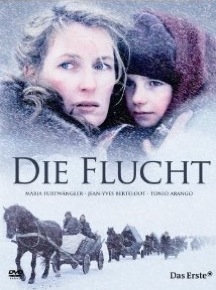
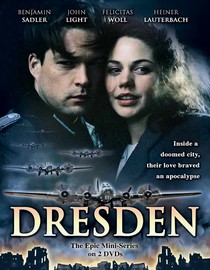 Just as Robert Shandley questioned how much Helmut Käutner’s In jenen Tagen (In Those Days, aka Seven Journeys, 1947) really did call into question German presumptions about their own suffering, several of the essayists in Silberman and Cooke’s book look skeptically at the motivations, conscious or not, of films of the last decade, including what they call “a wave of miniseries, commissioned by German public-television broadcasters. Those include Die Flucht (March of Millions, ZDF, 2004), Dresden (ZDF, 2006), and Die Gustloff (Ship of No Return, ZDF, 2008).
Just as Robert Shandley questioned how much Helmut Käutner’s In jenen Tagen (In Those Days, aka Seven Journeys, 1947) really did call into question German presumptions about their own suffering, several of the essayists in Silberman and Cooke’s book look skeptically at the motivations, conscious or not, of films of the last decade, including what they call “a wave of miniseries, commissioned by German public-television broadcasters. Those include Die Flucht (March of Millions, ZDF, 2004), Dresden (ZDF, 2006), and Die Gustloff (Ship of No Return, ZDF, 2008).
Among recent films are:
NaPolA (Before the Fall, 2004), directed by Dennis Gansel: Nazis recruit an aspiring boxer to train at their barracks; he accepts, over the objection of his father who detests Hitler; the young boxer encounters an ethical crisis when he finds he is being trained not to box, but to kill.
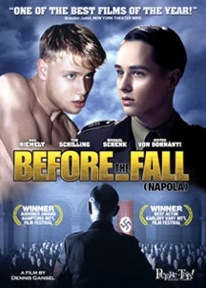
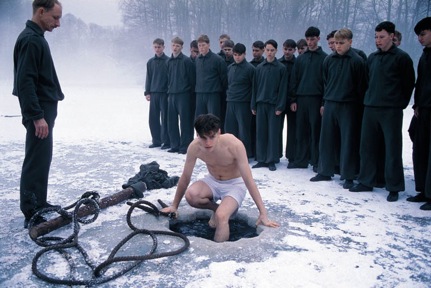
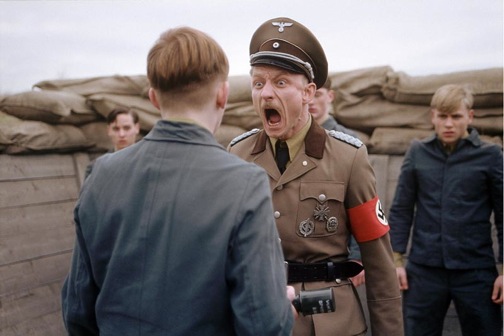
Rosenstrasse (The Women of Rosenstrasse, 2003), by Margarethe von Trotta: A German-American woman travels to Berlin to try to find out how she was saved from the Nazis, and why her mother will not reveal the full story behind that event.
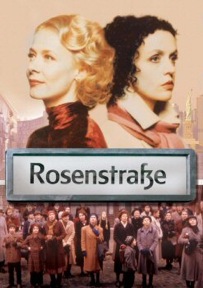
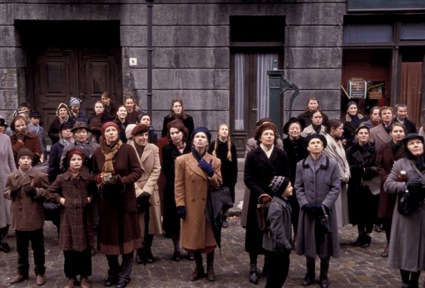 Anonyma – Eine Frau in Berlin (A Woman in Berlin, 2008), by Max Farberbock: In 1945, during the Red Army invasion of Berlin, a woman journalist seeks protection from wholesale rapes of German women; she finds a Russian officer whom she hopes will save her, but her accommodation turns to affection.
Anonyma – Eine Frau in Berlin (A Woman in Berlin, 2008), by Max Farberbock: In 1945, during the Red Army invasion of Berlin, a woman journalist seeks protection from wholesale rapes of German women; she finds a Russian officer whom she hopes will save her, but her accommodation turns to affection.
Taboo or No Taboo, in West and East Germany
While marketing and media reception of such film and television series harp on about how they mark a break with a decades-long taboo on addressing wartime guilt and experience, in fact that “has never been ‘taboo’,” the editors contend. That was even true, although in a different way, of films made in East Germany, they note.
In East Germany, official rhetoric with regard to West Germany was that it protected war criminals, regardless of such gestures of acceptance of guilt by West German leaders as making reparations and restitution to Jewish survivors. Party officials trumpeted the claim that wartime suffering had forged solidarity and integration, and that provided “effective strategies of self-explanation and self-exculpation.” Still, write Silberman and Cooke, “institutions and families wrapped the lived trauma and felt shame of the past in silence.”
The result, they write, was that “those who were willing to identify with the suffering of the antifascist resistance and with the Soviet losses in the war could reinvent themselves as victims of fascism, understood to be an extreme form of capitalist exploitation.”
Some cultural figures contested this way of construing the East’s wartime legacy. In 1965, for example, Heiner Müller, in his revision of Sophocles Philoctetes, probed generational guilt and political lying that was designed to gloss over it. Novelists Christa Wolf and Hermann Kant also explored that phenomenon. For Silberman and Cooke, Frank Beyer’s Oscar-nominated film, Jakob der Lügner (Jakob the Liar), 1975, an adaptation of Jurek Becker’s play, marked a high point in East German cinema by directly confronting German criminality during the Holocaust.
But Cooke and Silberman argue that however differently West and East processed wartime guilt, it remained a troubling force in both Germanys, and then in the reunified one, post-1989. Before the wall fell, the waters were roiled by such figures as US president Ronald Reagan (the conciliatory and highly contentious visit to Bitburg military cemetery) and German chancellor Helmut Kohl (his plan for a historical museum in Bonn that would demonstrate how much Germany had changed, spiritually and morally).
The editors suggest that the fall of the wall in 1989 and the revelations of the obvious that it permitted – the criminalism of Communist leaders – ushered in a new phase where victimhood became a more acceptable presumption in all of now-reunified Germany.
This troubled intellectuals like Jürgen Habermas, who proposed that the identity of reunified Germany should not be nationalist, but rather based on consciousness of Auschwitz – “the open wound that keeps alive both the memory of the Holocaust’s victims and the need for a transformative culture of atonement,” as the editors write.
Debates over such issues, note Cooke and Silberman, have continued to be the backdrop for a new spate of films that emerged along with a wealth of films on DVD and Internet archives that capture and dispense data but do not necessarily decrease the tendency to choose evasively what to remember.
Read an interview with Marc Silberman.
An excerpt from Paul Cooke and Marc Silberman’s introduction to Screening War: Perspectives on German Suffering
The general consensus that the German past will never be adequately “bewältigt” [dealt with] because of the extreme nature of its historical and moral guilt does not contradict the fact that postwar Germany’s own discourse on Vergangenheitsbewältigung [coming to terms with the past] has in some ways become the model for efforts of international institutions to think about guilt in the context of tribunals and truth commissions. Memory is inevitably constructed from a contemporary perspective, and the struggle of the “right” way to remember is one that shapes both cultural discourses and political legitimacy. In recent times, the flood of media and mediated images of the past has triggered a mini-boom in critical memory studies and generated new strategies of remembering as well as insistent questions about who is remembering what. The inflation of oral histories and “private” memories enriches the archive with a proliferation of different stories, but the swelling archive also challenges the epistemological privilege of professional historiography and its preference for coherent, linear explanations. The shifting definition of victims and victimization belies the established discourse of contrition, while at the same time various groups vie for recognition of their victim status. Clearly, mnemonic practices are ideological activities of individuals and groups who engage in the production of meaning. These practices are themselves historical in nature, subject to counternarratives, realignments in social and political relations, and modifications in dominant discourses. Screening War focuses on phases, generations, continuities, and ruptures within the field of memory construction on film. The power of past events, persons, images, and narratives to generate new stories and reflections on the present marks the proverbial persistence of memory, and the essays [in Screening War] show how this kind of memory is put to public use onscreen and offscreen in the continuing process of shaping and forgetting the past.” Dresden, bombed; Deutsche Fotothek
Dresden, bombed; Deutsche Fotothek
Previous Post: An Interview with Marc Silberman
Next Post: The Cinema of German Wartime Suffering

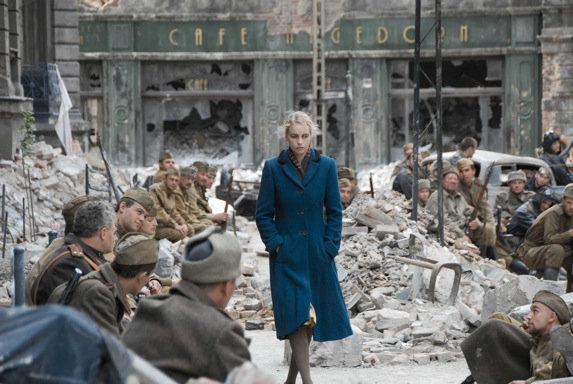
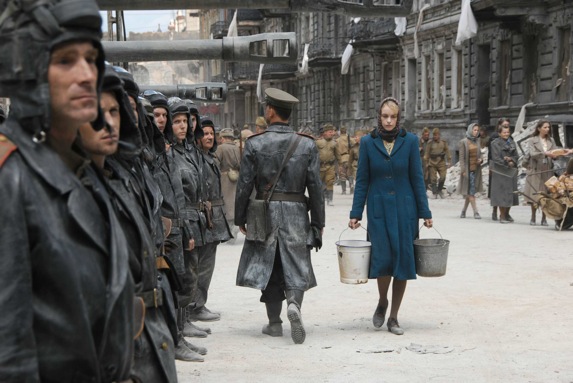


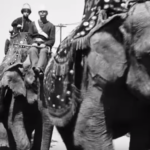
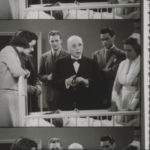

The reason the Germans have not paid restitution to the Poles is because Poland was awarded nearly one fourth of prewar Germany at the end of the War. It is hard to comprehend that at that time there existed someone smart enough to decide that one fourth of prewar Germany was probably enough restitution. Today the value of these areas, now incorporated into Greater Poland, are in the trillions. At least four times the value of Eastern Poland which the Soviet Union decided it deserved. I will name again the major German cities now in Poland: Danzig Stettin, Breslau, Posen and, of course, the jewel of the Baltic Koenigsberg is in the hands of the Russians. Besides these cities, there were the churches, museums and cultural properties, the highly developed infrastructure, factories, universities (Brahms composed his well-known ‘Academic Overture’ for the hundredth anniversary of Breslau University), schools, autobahns and various ‘breadbaskets’ upon which Germany as a whole depended. It should be remembered that Poland has signed an international document attesting that it will not seek further restitution. Like everything, however, it could become an open question.
Yes, I am aware of the often quoted three partitions of Poland which took place in the 18th century. I can name the where, when and how it all came about. Probably it is no surprise that the Russians got the bear’s share and the Germans came out short by comparison. If there is anything the Poles are masters of it is claiming that such and such an area was originally Polish due to the efforts of some Piast prince. Yes, there were a lot of Poles in West Prussia and even in Posen where Hindenburg was born. But I can also point out that before the War, Danzig and Breslau were ethnically and culturally nearly 100% German. The attempts by the Poles to prove beyond a doubt the ‘polonicity’ of these two cities has been, first of all, comical and then painful. As there were Poles in West Prussia, the repressive Versailles Treaty which ended World War I resulted in a large number of Germans ending up in Poland. It was the random murder and oppression of these Germans which ignited World War II. The Poles stubbornly refused to negotiate this issue and the return of the German city of Danzig. Had they been more practical, the War could have well be avoided.
Even in this “good” war, as it is called (There are no good wars!), the little person pays with his life and property instead of the majority of the party ‘Bonzen’. The grandmother in East Prussia who was gang raped and nailed to the barn door in East Prussia, the women and children who suffered a horrible death in the icy waters of the Baltic when the refugee ship Gustloff with 9,000 aboard was arbitrarily sunk by a Soviet submarine captain, (He later for the Order of Lenin for his heroic action.) and finally the old German farmer who was beaten to death in one of the Polish revived concentration camps in Silesia all paid the ultimate prices for being seen as Nazis and not Germans
I do recognize what was done to the Poles and others. I abhor and condemn the crimes committed against them no less than those committed against the Germans. But I am drawn to try and point out that the Germans should not be (even after 65 years) painted with the wide brush of ‘NAZI’ and their sufferings and victimization should not be dismissed with the erroneous, but unforutnately oft repeated statement, ‘THEY DESERVED IT.!’ The majority of the German people were themselves victims of the War. The ignorant belief that the Nazi and the whole German people were one in the same is a repugnant falsehood used to unsuccessfuly justitfy the horrendous crimes of the Allies.
-rudolf
Let me bring this to a more personal level.
When the George W. Bush Regime prosecuted the Iraqi War for no exigent reason, I observed two things: that roughly half of the nation supported this atrocity with great nationalistic gusto, fueled by propaganda that touted the offensive as America’s sacred duty to liberate the oppressed while protecting the world at large; and that for the half who did not elect Bush, did not support the war, who protested the war under ridiculous restrictions [the “freedom” zones permitted protesters, that orbited political events, were so far away they rarely made press], it did not matter. Americans were equally held accountable by the International community. That the Bush Regime could get away with so much under the aegis of God and Liberty was shocking to me. Journalists who criticized the Administration’s policies or revealed the sober realities of the effects of war, suffered professionally. The nation that epitomized the spirit of liberty was happily settling into fascism, without the brutal coercions that generally come with such transitions.
My family were German-Polish immigrants, refugees of the second World War. While I can’t speak for my paternal family, who were silent about the experience, I can speak for my maternal family. For generations, my mother’s family had lived in Poland. They were poor rural farmers who held land along the Vistula River, just north of Warsaw. They never voted for Hitler. They didn’t know who Hitler was until Poland was invaded. They despised the Nazis. Because they were ethic Germans, all their sons were impressed into the Wehrmacht and all died on the Eastern front for a government they reviled. Refusal meant summary execution and compromised the lives of family members.
Because my grandparents’ farm was on a small isle off the bank of the Vistula, it was difficult to access–it required ferrying across the river. This meant that my grandmother was in a position to hide provisions and animals from Nazi procurement. She was able to feed the disenfranchised Poles, in secret. She sewed clothing and blankets for them. She even midwifed births when Polish women were denied medical care. My grandfather, who was already in late middle age when the Nazis arrived, was a fisherman, and he sold fresh fish in water barrels at market. A fellow German-Pole saw him selling to Jews and reported him. He spent 30 days in prison and was beaten, ridiculed, and tortured. When the Gestapo finally released him, all he would say was that if Hitler won the war, there was no God.
When the Russians “liberated” Poland, everyone advised my grandmother to stay on her farm. She had been so good, people told her. She had been a Partisan. Surely nothing would happen to her. What happened to her, after the rapes, was that the Russians arrested her and sent her to Warsaw, where she was sentenced to death. Seventy Poles in her village testified on her behalf for clemency, but she was still stripped of all her possessions. And the people who came to loot her property were the same Poles she had succored against the Nazis. She was forced to sit and watch as everything was taken, down to her underwear. When a young woman whose illegitimate baby my grandmother had birthed, and whom my grandmother sent extra milk so that the new mother could nurse, walked away with my grandmother’s sewing machine in sassy triumph, her Soviet boyfriend on her arm, my grandmother collapsed. They urinated on her face to wake her up. She signed the farm over to the Polish workers who had been with her family before my mother was born and WERE family, and she became a servant in her own home. My 12 year old mother was placed in a Labor Camp. Later, my grandmother told me that it did not pay to be a good person, unless you believed in God, because only God noticed. The very same people you help will spit in you in the face for your trouble.
After two years, my grandmother was able to get forged traveling papers and identities through her old Partisan contacts, and she and my mother walked out of central Poland, literally walked, to Germany. And there they were hated by the Germans who blamed ethnic Germans in Eastern Europe for the war. “Ethnic Germans”, the term meant nothing to my mother’s family. They were German-Poles, their fealty was to mother Poland, they were bilingual, and had Russian and even Jewish ancestry, going back two centuries. The anger against refugees in Germany was so intense, they emigrated to America, where my grandmother had family.
As a child growing up in the 1960s, I was called a “Nazi” by other children before I entered kindergarten. Nazi. What was this Nazi?, I asked my mother. How am I a Nazi? I found out who, how, and why soon enough. Because my mother spoke Yiddish and knew how to keep a kosher house, she began cleaning for Jewish families. At one interview she was asked how many Jews she had killed.
All my life I reviled my German heritage. The language disgusted me. The customs disgusted me. German music disgusted me. The food disgusted me. When my father’s German relatives came to America to visit, they disgusted me. I was sick with shame and guilt and horror. In college I learned that it was theorized that Germans, because of their militarism, where born primed to commit genocides and war crimes. If I could have cut every German part out of my flesh and have done with it, I would have. I refused to read classic German literature and still struggle with that. I would rather vomit than speak the German language.
Outside of the suffering of my mother’s family, I didn’t even learn about the nighttime fire bombings until I was 30 years old. I only recently learned that the Soviets were actually given three days by the Allies to rape and murder women and children in Berlin as payback. I also recently learned that certain cities were not strategically bombed as military targets, but as experiments, in the zeal for discovering the proper conditions needed to create firestorms.
One cannot intellectualize suffering and victimization. The idea that all Germans, women and children, including ethnic Germans who had never stepped foot in Germany, deserved to be brutally raped and utterly disenfranchised, or cooked alive in bomb shelters, or mired in melting streets, or sucked into tornadic fire storms is as inhumane as any genocide. War IS a crime in itself. And how does it help to think collectively about what was and was not just reparation? It is when we think of people in the collective, smear them with broad stereotypes and ugly, often absurd fear-mongering prejudices, that humanity falls apart. And humanity falls apart quite easily. I think my grandmother was correct in her assessment of the worth of good deeds–that good acts are a matter of individual conscience and nothing more.
I find it very curious that we seldom hear about Japan’s war crimes against China and against POWs, which were just as brutal as the Nazis, perhaps worse. I think about the euphemisms the Imperial Army used for the virgin, often prepubescent, Chinese girls they procured for rape–they were “comfort girls.” Yet how many Japanese war criminals were tried and convicted? By then the world had moved on, and America was preoccupied with the Korean War.
It is important that we hear the singular voices that rise from the atrocity of war because it is through the individual that we come closer to the truth of global historical events. It’s the intimate knowledge, the graphic knowledge of what war does that is war’s best deterrent. And suffering must be respected, regardless of national culpability. Are we to say that the Japanese have no right to their grief after being fire bombed and nuclear bombed? No. Of course not. But the Germans….?
[please forgive the rushed writing]
After reading such an informative article I intended to leave a comment basically to record my appreciation as it has provided me with “leads” to more sources of information regarding a subject that I have become extremely interested in. However, after reading the previous two comments I find no words forthcoming that are worthy; the above two say so much…..